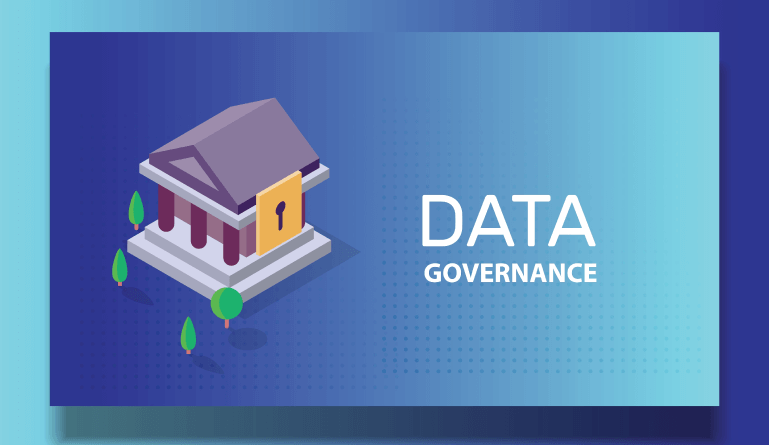Data governance is evolving. Gartner research shows that 61% of organizations prioritize data optimization for business processes and productivity, and not just for compliance. To succeed in these goals, one needs to understand the importance of data governance and the key steps to follow.
Understanding the Importance of Data Governance in 2023
Organizations utilize data governance to maximize customer and business data. By acquiring data about your customers, workers, assets, and more, and ensuring that it is utilized properly and efficiently, you may have easy, dependable access to data that assists in the making of critical business decisions.
Security is another major advantage of data governance. By creating a data governance structure, one can guarantee the security of your organization’s knowledge repositories. Considering all these benefits, it makes sense to understand the meaning of data governance and implement the right data governance steps in 2023.
Data governance and data management are commonly used interchangeably, however, they are distinct terms.
Data governance focuses mostly on documentation. It defines who owns a company’s data, who may have access to it, which data sources are available, and what processes have been established to ensure data security and compliance with applicable requirements.
Data management is primarily about action, or implementing the data governance strategy’s regulations and guidelines.
8 Key Steps for Data Governance
For effective data governance in 2023, you must remember the following steps and recommendations:
1. Convey your data governance plan to the team(s)
Explain to every team or stakeholder how robust data governance may help them in performing their tasks more efficiently. This will help them understand that their efforts towards this end — like producing an Excel spreadsheet that is used by several individuals within a shared drive, is a key digital asset. People are going to be more likely to embrace your data governance program if they are aware of its significance to the accomplishment of the overall organizational objectives.
2. Take stock of your existing data governance measures
Whether you are conscious of it or not, your company, presumably, is already engaged in a substantial amount of data governance operations. Examine what you’re currently doing, such as “master data management,” to determine where there are loopholes, if there are any inconsistencies within groups, and what you need for an improved data governance program.
3. Understand the components of data governance
Your approach should begin with a formal mission statement or charter that describes the data-related objectives of your organization. After completing this stage, you may proceed to the data governance elements that will assist you in achieving these objectives. It will generally include:
- Documentation: A starting point for your business so that you may review your established processes to determine what needs to be changed and where.
- Data catalog: A listing of accessible data containing information such as search functionalities, history of data origination, collaboration tools, and file formats, along with every other relevant characteristic.
- Data mapping: A representation of the data flow within your organization, its various interconnections and intersections, and how that flow might alter its state.
- Glossary: A common lexicon including explanations of organization-specific terminology and concepts.
- Metadata: Metadata is data that is used to classify and retrieve other data; for example, if the data is a picture of a cat, instances of metadata also include file type, relevant tags or phrases, and the file’s use rights.
- Master data: The defined, authoritative data source you deemed vital to the data governance strategy.
4. Map your current data governance maturity level and the possible ultimate goal
Using a maturity model, you may evaluate your organization’s capacity to effectively adopt a data governance plan. This approach analyzes the varied degrees of engagement, awareness, and user buy-in throughout the company while offering guidance on how to arrange the rollout of a strategy. Typically, there are five phases to something like this:
- Infancy: At this time, there could be limited consensus for a governance approach. Current workarounds and your segmented data governance measures may be “good enough” for managers to not yet see the requirement for such an initiative.
- Initialization: At around this point, prominent individuals understand that more effective measures are required to replicate past successes. It is your responsibility to persuade your team that they must adopt the strategy — which is what you accomplished in phase 1.
- Course correction: At this phase, the plan for data governance is more stable. You may use core management techniques to prepare your business for the process of establishing an extensive, integrated governance framework.
- Business advantage: At this phase, processes are more sophisticated and consistent across the organization. You have a consistent approach to data governance, and participation has increased significantly. Also, your data governance system is clearly linked to business needs, present and future.
- Optimization: Companies that have achieved level four view data governance as a fundamental, indispensable component of their processes. Your data governance policy has been operational for some time, and you’re actively implementing optimization measures.
5. Assign ownership
Identifying whose data belongs to whom is the next stage in adopting data governance in 2023. These individuals must play an active part in the development of a simplified data governance policy since they have the ultimate authority over the data. So, even if the chief data officer (CDO) or governance director should lead the process of developing the program, data owner buy-in is vital to its achievement. It can be a particularly difficult step in 2023 if stakeholders are working from different locations – so make sure that everyone is on the same page.
6. Select your preferred data governance model – centralized or federated
Traditionally, businesses have used passive, compliance-focused architectures. They outlined how users should generate, acquire, manage, and discard data. To take advantage of current analytics, businesses need innovative governance models which are context-aware and foster creativity.
Moreover, the governance paradigm must be centralized or decentralized. In a centralized architecture, IT or some other authority controls data access for one-to-many business usage. Only a few “creators,” while the rest are spectators. A federated governance system occurs when multiple groups possess data rights. This is important when departments have varying data requirements.
As a middle ground, you can also explore delegated data governance. This section introduces new positions independent of IT or centralized administration. Site administrators or data stewards, for instance, are identifiable and might have immediate access to data sources. The introduction of processes to verify, promote, and certify data may be constrained by approval workflows.
7. Implement data governance
This is the operational component of implementing the data governance strategy and will consist of the following three processes, among others:
- Conducting a data assessment: To establish a data governance policy, a business must be aware of the data it currently possesses. As a component of this procedure, the business must first inventory data, classify data, and filter data into knowledge streams or buckets.
- Centralizing metadata storage: Usually, departments within an organization have their own metadata management databases. Yet, this has resulted in data silos; centralized metadata ensures the scalability and flexibility required for analytics.
- Preparing the data: This is among the most time-intensive phases. It is necessary to return to the raw metadata, convert it, fix it, and combine datasets into data catalogs. Its primary activities are data cleansing, data transformation for standardization, and the development of glossary templates.
Fortunately, there are several data governance software platforms available that can transform one or more of these steps.
8. Create distribution pathways, along with risk assessment
Finally, contemporary initiatives for data governance should democratize data. And therefore, policies are most successful when they are integrated into daily tasks, processes, and individual tools in regular use. While distributing data across teams, security protocols, and compliance obligations must also be considered. The Global Data Protection Regulation (GDPR), for instance, may compel you to implement additional security safeguards.
Key takeaways
As companies generate more information than ever before (from IoT, remote devices, online platforms, business apps, etc.), good data governance is vital. At the lowest level, it will ensure compliance with data protection laws, and at its most mature, it will pave the way for stronger analytics. These eight data governance steps will be crucial for success in 2023, and you can always augment your governance strategy through five additional strategic measures.







